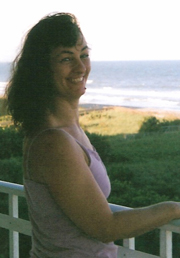Managing your GenesPowerful Patient 2008 week 41Host: Joyce Graff, WebTalkRadio.net
Beginning October 6, 2008
Joyce and Gale Lugo talk about Raymond Francis’ book, Never Be Sick Again. Before 1993, Gale had nine surgeries in 18 years for tumors of the brain, spinal cord, adrenal gland and eye due to a genetic condition, von Hippel-Lindau (VHL). Her doctors could offer only surgery. She decided to take charge.
About Our Guest
Gale Lugo is a retired communications supervisor (she worked her way up from the mailroom) who lives in Florida with her husband, one dog, a number of stray cats, and three kittens. She volunteers for the VHL Family Alliance, heading the Florida chapter, chairing the Southern Region, and moderating the online support community at http://vhl.inspire.com.
When she made up her mind to take control of her body and work to avoid any further surgery, she sought a degree in natural healing and herbs. For the past fifteen years she has been following a program that aligns well with the six pathways Raymond Francis discusses:
Clearly Gale cannot control her genetic makeup. She can’t change her genes, but she can change what they are bathed in: their environment and nutrition, and their oxygen level. Through careful food planning, and listening to what her body likes and doesn’t like, she has gained an amazing level of control over her situation and is living well with a heavy dose of VHL tumors.
She has also formed a very constructive partnership with her doctor – which her doctor describes as “we work together.”
Refrigerator Air Purifier
Gale uses an air purifier in her refrigerator as one effort to reduce the toxins in her environment. There are a number of products designed for use in refrigerators. Search on the internet for “air purifier for refrigerator.”
Food
Gale has been following the food combining method that Raymond discusses in his book for many years. She does eat meat, just in modest quantities and combined only with vegetables, not with starches.
She does eat small amounts of real sugar (raw sugar or molasses) and small amounts of “real salt”. See http://www.internet-grocer.net/salt.htm for a discussion of the additives in table salt.
A favorite recipe for drinking vegetables (delicious – and helps elimination): Modification from Joyce:
Start Slowly, Make Changes you can Live With
Gale’s advice is to begin slowly – consciously add fruits and vegetables, and work on reducing the toxins in your environment. Don’t flip from junk food to wheat grass – you won’t stick with such a radical change.
Make a few conscious changes along Raymond’s six pathways that you can comfortably work into your life and live with:
|
